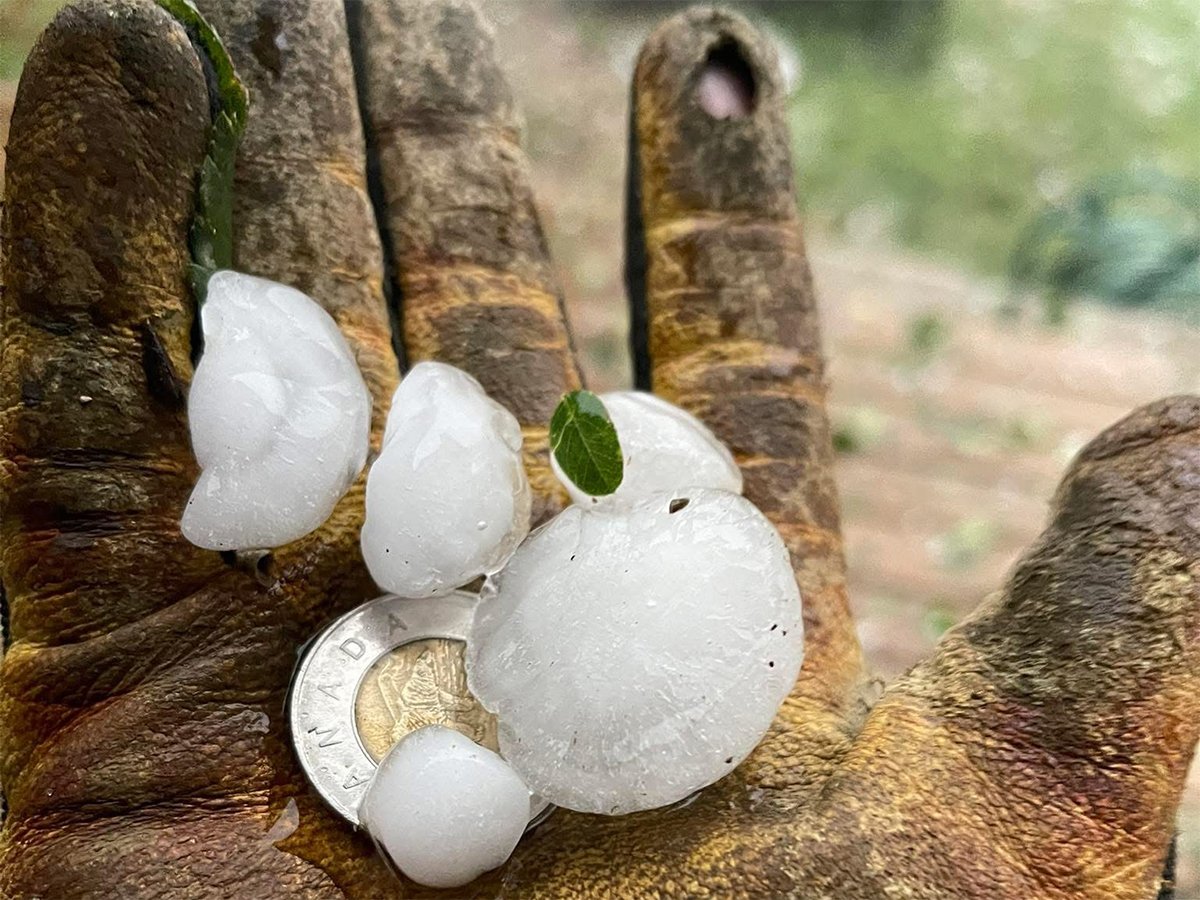It is common knowledge that honeybees give us honey for food but it is less well known that humans would starve without plant pollination by bees, butterflies and beetles.
We can thank a pollinator for one out of every three bites we take. Pollination is essential for vegetables such as cucumbers, squash and pumpkins while other fruits and vegetables produce better quality and quantity after pollination.
Without pollination, plants would not produce the seed necessary for their survival.
Our relationship with bees, butterflies and other pollinators must be reciprocal. If they are necessary for our food supply, then we should roll out the welcome mat and provide food, water and shelter.
Read Also

Half million acres of Alberta crops affected by massive hail storm
Late August hail storm catches farmers in prime harvest mode, damaging half million acres of crops in Alberta.
Rather than cursing the darkness of the decline of pollinators, we can light one small candle by restoring the natural ecosystem on our properties.
Flowers are the main food source. Mimic nature and you will make an impact. Wild flowers can be supplemented with low maintenance choices such as Cosmos, Sweet Williams and Zinnias. It is important that you plan wisely to ensure a continuum of bloom from early spring to late fall.
Monarch butterflies have a preference for milkweed but make sure that your choice is not designated a noxious weed in your province.
Water is a necessity for wildlife and most prairie people enjoy some type of water feature on their property. Unfortunately, a pristine bird bath will not adequately serve bees and insects.
They require rocks or driftwood to perch on and appreciate a little mud with their drink.
Native bees are mostly solitary and do not live in colonies. They nest in the ground, hollow trees or plant stems so a fastidiously neat garden is a poor habitat.
If you have a small property, you can augment your backyard ecosystem with subsidized housing. A simple house that mason bees will appreciate can be made in a bird house style with holes drilled in varying diameters from two to 10 millimetres. The holes must be 12 to 20 centimtres deep and closed at the back.
Bamboo also works well. The bee house should face south or east for morning sun and be placed one to two metres above the ground. After building your first bee home, you will be ready to build an insect hotel or an entire resort.














